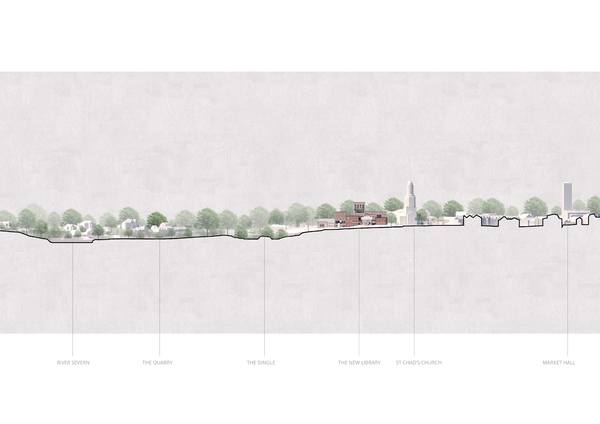This project aims to nurture and accommodate communal activity, social exchange and cultural production through the implementation of a rigidly adaptable building programme. By dispersing the traditional library programmes, such as the physical collection, and in-turn enclosing them in solid building masses across the site… void spaces were created in the manifestation of covered public squares that encapsulate the concept of openness, permeability and flexibility.
As a result, an educational institution is born in Shrewsbury that symbolises the preparation for future changes and contemporary issues, and one that provides a platform for all kinds of communities and their specific needs.
“The traditional city is primarily an experience of spaces defined by continuous walls of building which are arranged in a way that emphasises the spaces and de-emphasises the building volumes.” (Schumacher, 1996) This proposal aims to extend the experience that is all so familliar on a macro scale in Shrewsbury - however, in turn, the new library recreates this on a micro scale. The form and composition of the scheme reflects the emphasis on wayfinding and personal exploration as you move through it. Both the city and the scheme are revealed as a set of jerks and revelations.
The material differentiation between the core programmatic volumes that house the library - and the open, but covered, public squares further accentuate the transition from the surrounding city and park. It is precisely the structural distinction between the heavy concrete and red sandstone clad volumes - and the light stainless steel structure, punctuating the squares, that highlight this. However, although the volumes are grand, a sense of scale is maintained. ''These gravitational opposites, the immateriality of the frame and the materiality of the mass, may be said to symbolize the two cosmological opposites to which they aspire: the sky and the earth.’’ (Baeza, 2015)


